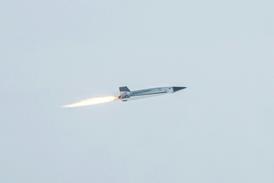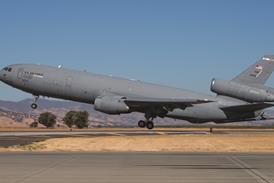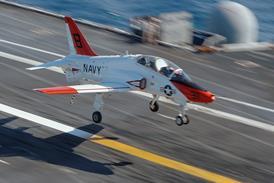Boeing’s defence unit has received a $657 million contract from the US Navy (USN) to provide two additional MQ-25 Stingray autonomous refuelling jets under the progamme’s initial development phase.
The deal was announced by the Pentagon on 29 March and covers two system demonstration test article (SDTA) airframes, designated air vehicle numbers four and five.
Boeing announced delivery of the first MQ-25 on 21 February. That aircraft was also a demonstration test article, which the manufactuer at the time said would be used for airframe integrity evaluations.
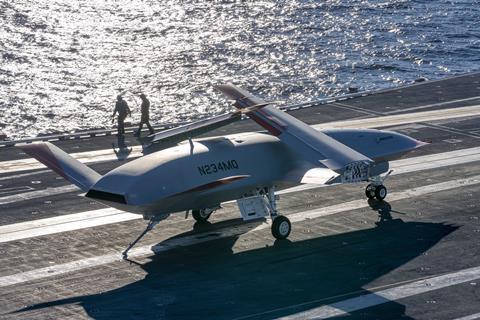
Work on the two additional MQ-25 test articles is expected to be completed in October 2028, according to the contract announcement.
Fiscal year 2025 budget documents submitted by navy officials in early March suggested the service would procure five MQ-25 SDTAs, along with 67 operational aircraft.
Boeing clarified to FlightGlobal on 2 April that the 29 March MQ-25 contract covers two of the five SDTAs outlined in the navy’s FY2025 budget request, rather than two additional test articles. The airframer also expects to be funded for three low-rate initial production model MQ-25s during that period, although the requirements for that contract have not yet been formalised.

Under the latest schedule, the navy plans to reach initial operational capability with the MQ-25 fleet in the second half of 2026 – with 13 aircraft delivered.
The carrier-capable Stingray represents the USN’s first uncrewed aircraft able to be launched from and recovered to a ship in the same manner as the service’s crewed fighters.
However, unlike Boeing F/A-18s and Lockheed Martin F-35Cs, the MQ-25 will operate without a pilot on board. The Stingray also eschews a remote pilot, using advanced flight-control algorithms and planning software to execute missions and return to the carrier autonomously.
MQ-25s will take over the job of refuelling fighter aircraft at sea. That role is currently filled by F/A-18 Super Hornets, which are reassigned from combat duty to act as ad hoc tankers.
The navy says the addition of the MQ-25’s tanker capability will help mitigate a shortage of available combat aircraft and reduce fatigue on the service’s Super Hornet airframes, extending the operational lifetime of the multi-role strike fighter.
A test version of the MQ-25 has successfully refuelled the F/A-18, F-35C and Northrop Grumman E-2D Hawkeye. The USN plans to have Stingrays supporting air wings on both its Nimitz- and Ford-class aircraft carriers.
The Stingray will have a secondary duty of performing intelligence, surveillance and reconnaissance missions, according to the navy.
“MQ-25 will have the ability to refuel all carrier-based fixed-wing aircraft capable of aerial refuelling and pass sensor data to other aircraft, naval vessels and ground forces,” the service says in its FY2025 budget request.
A Boeing-owned test example of the MQ-25 completed the type’s its first flight in 2019 from MidAmerica St. Louis airport in Mascoutah, Illinois.
The navy carried out deck handling tests using the same Boeingowned MQ-25 in 2021, aboard the USS George H W Bush Nimitz-class aircraft carrier.
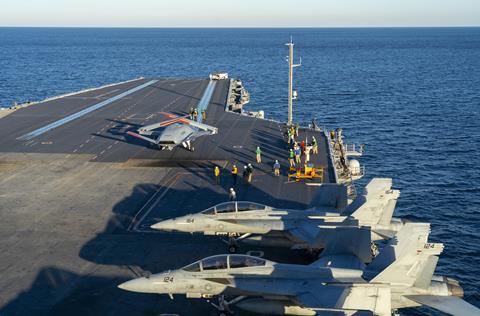
Story updated on 2 April to include additional details on the MQ-25 programmatic schedule





